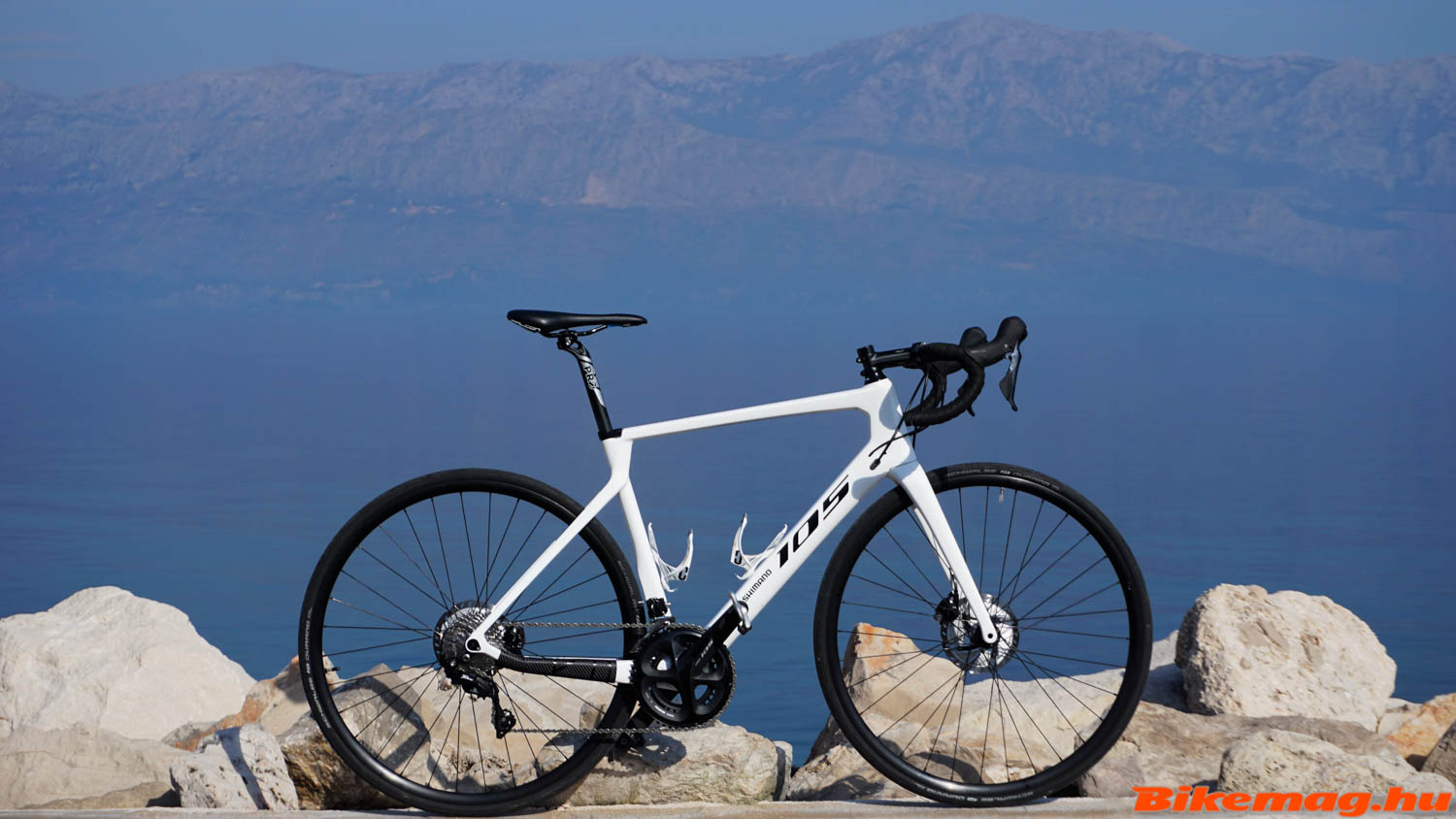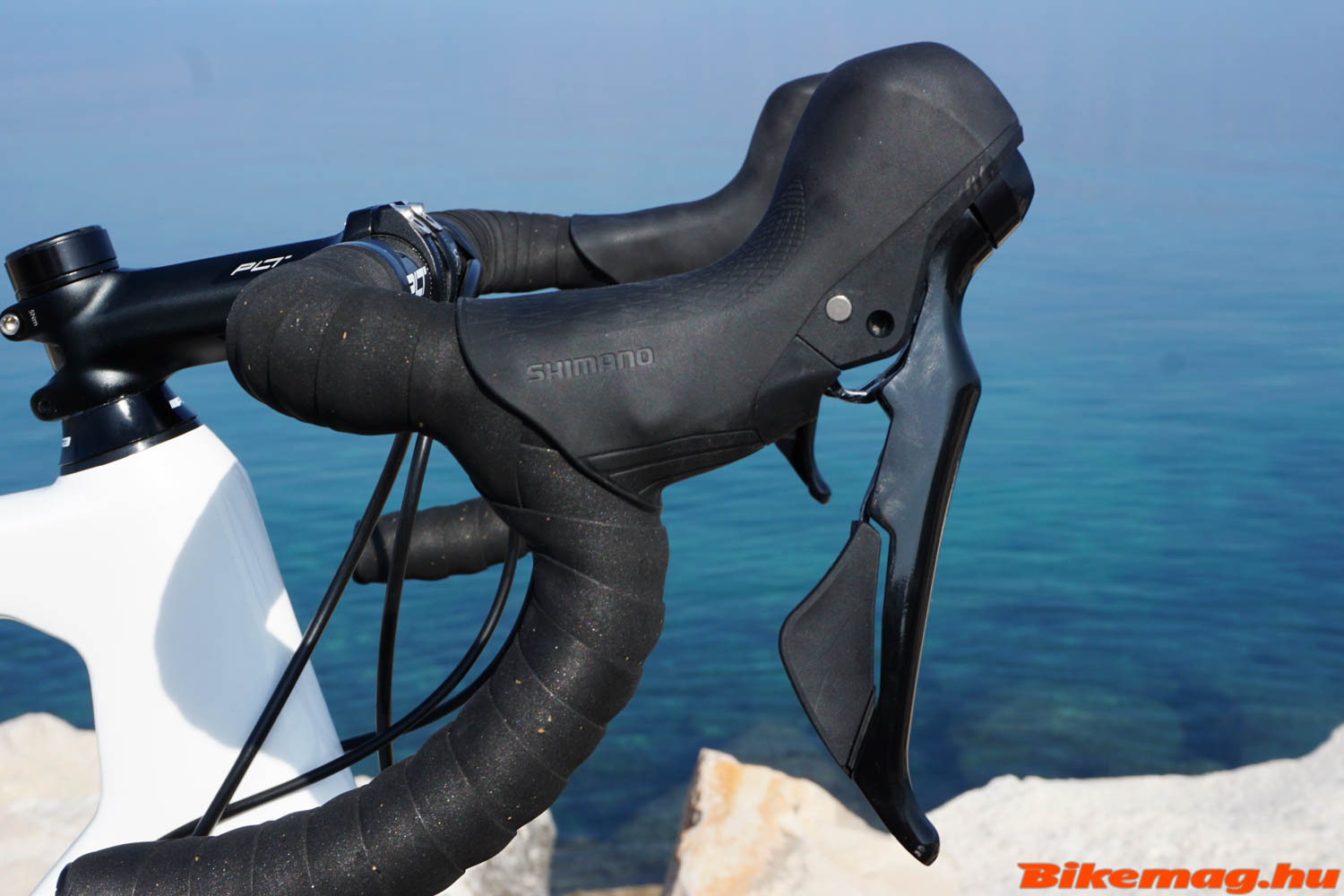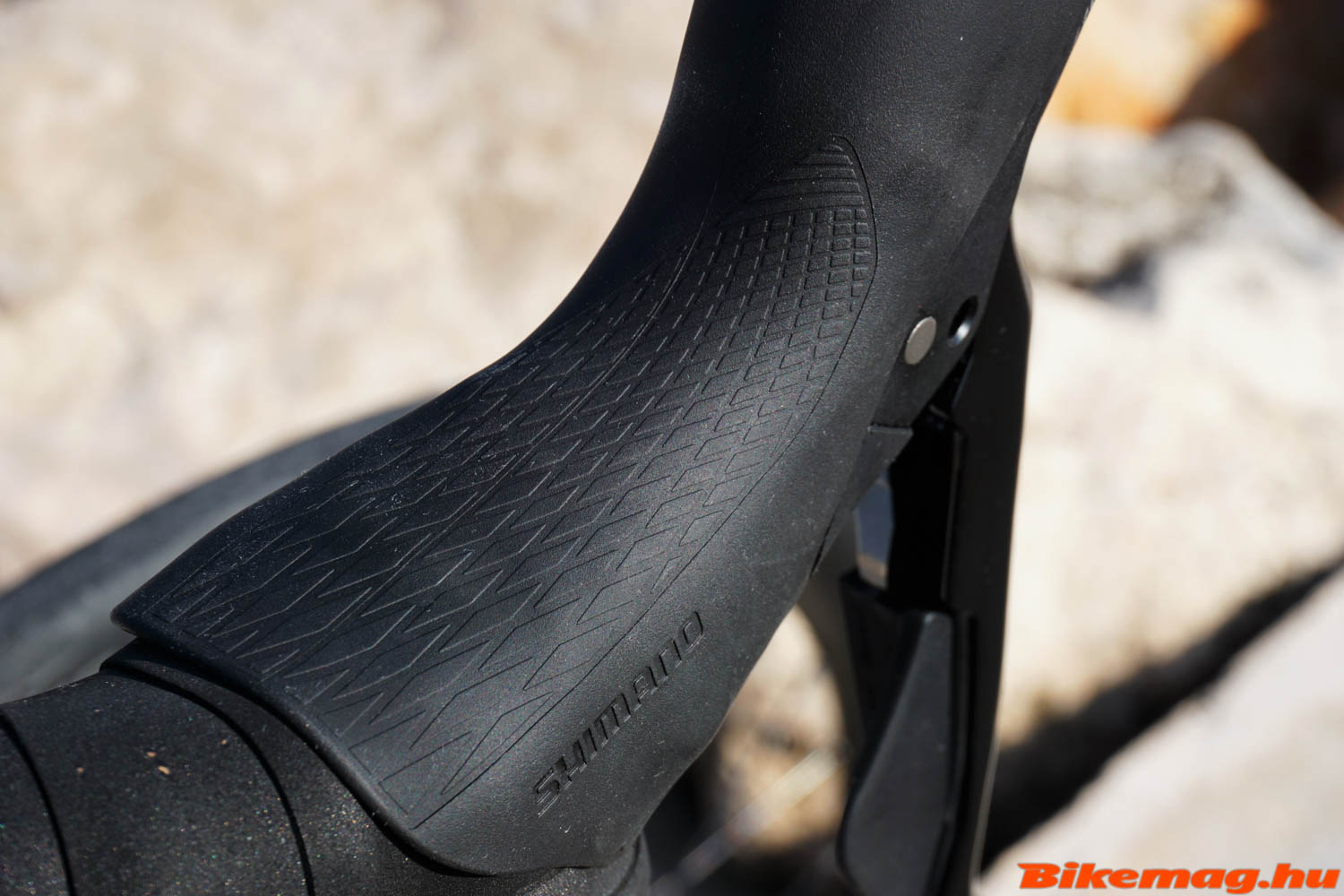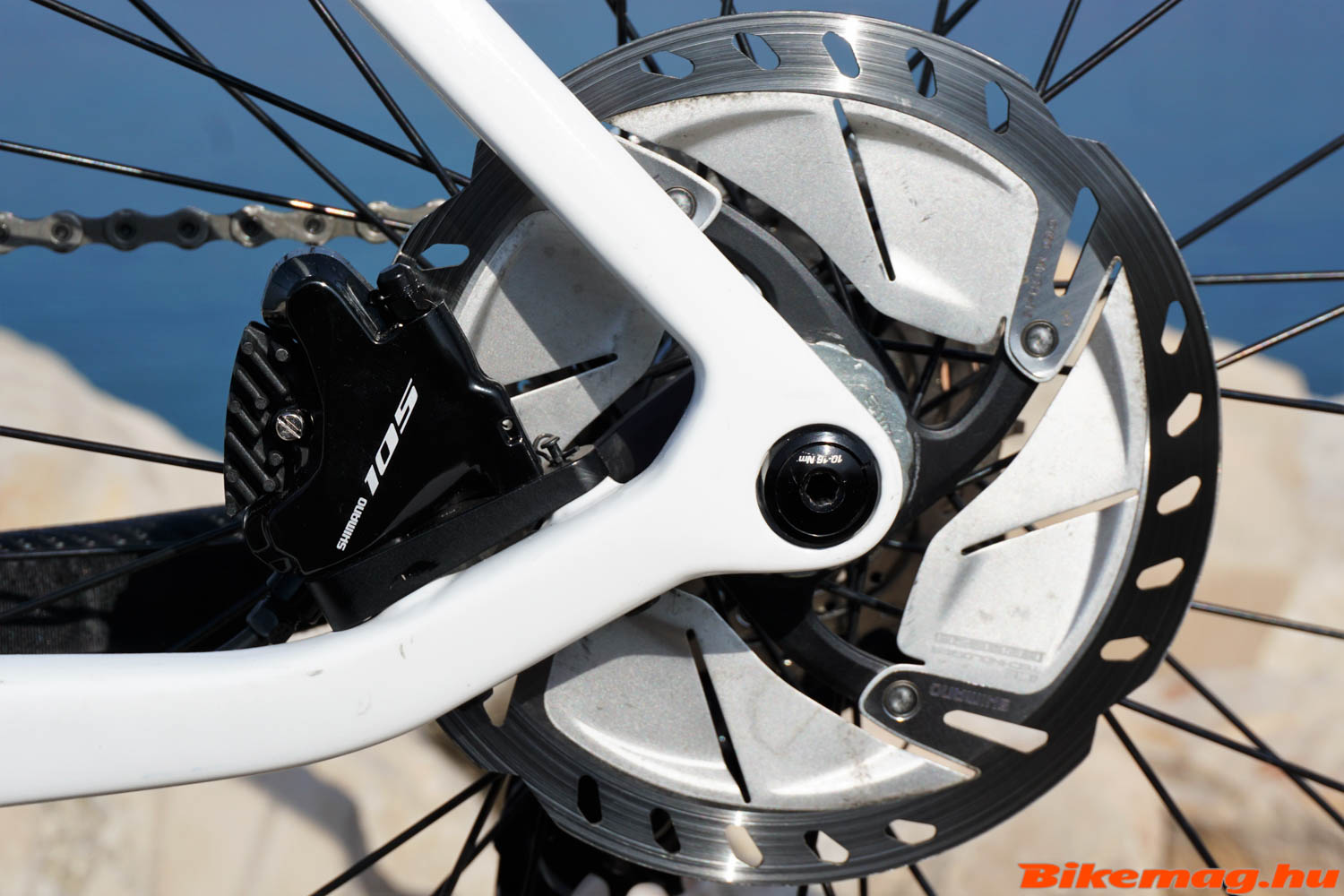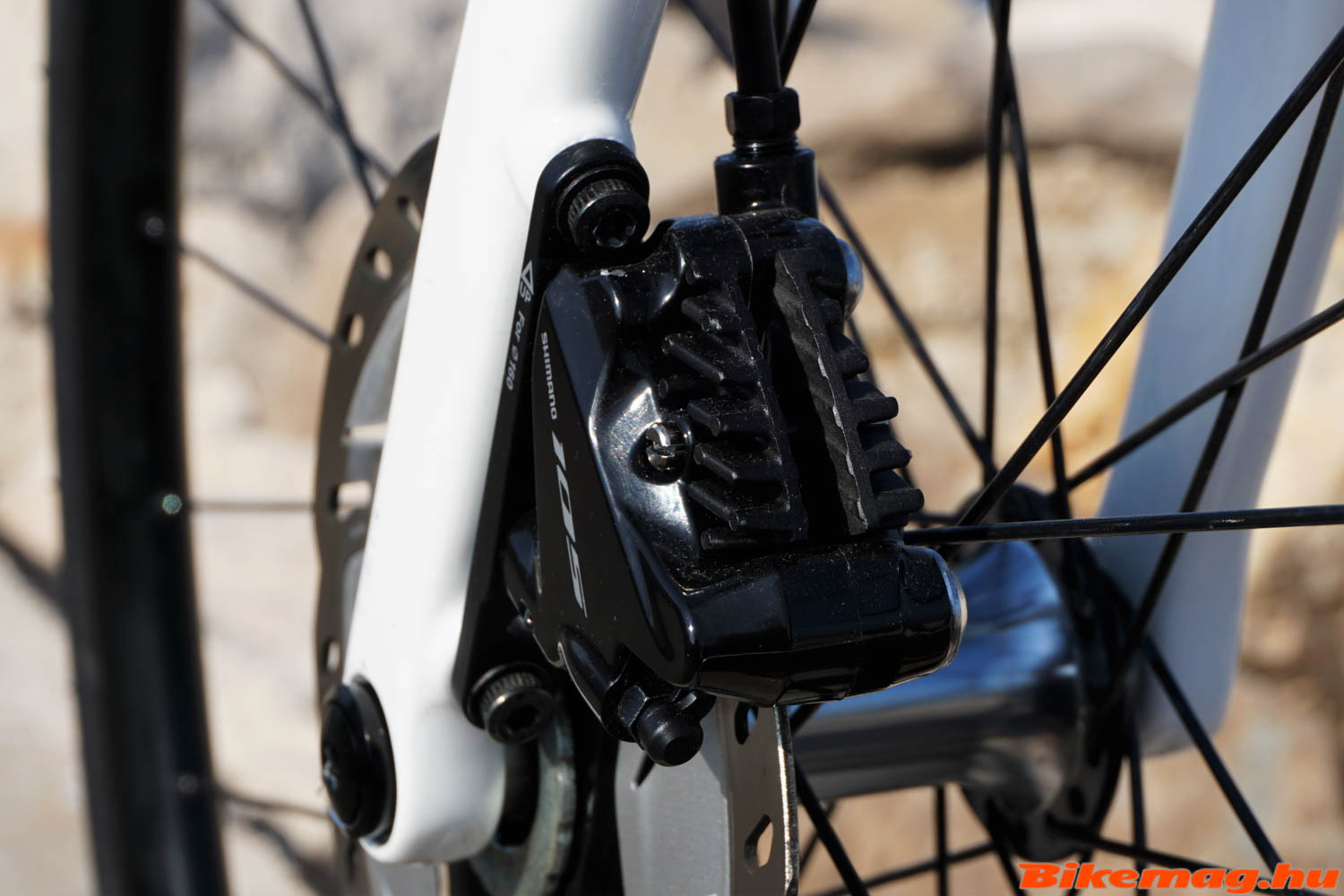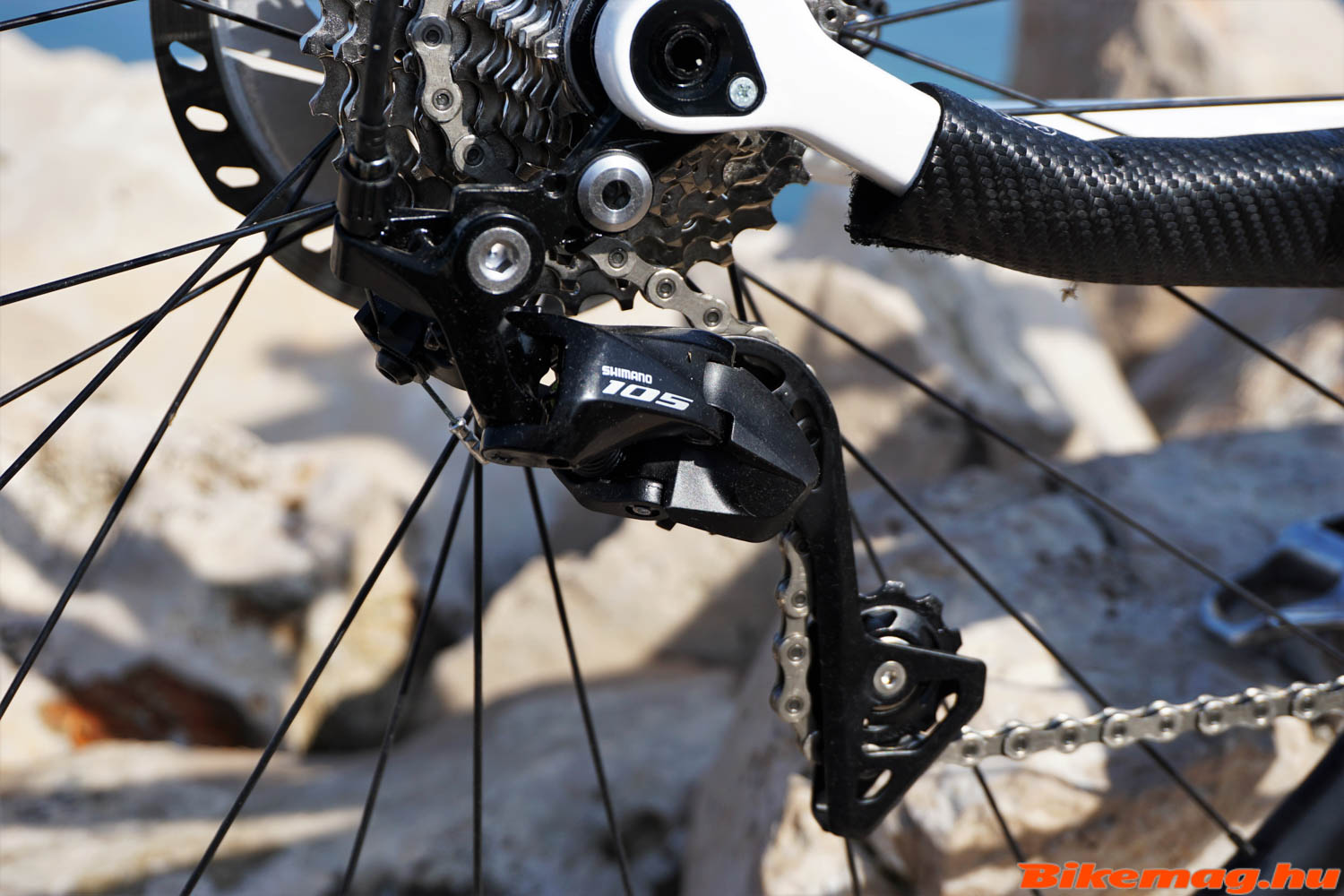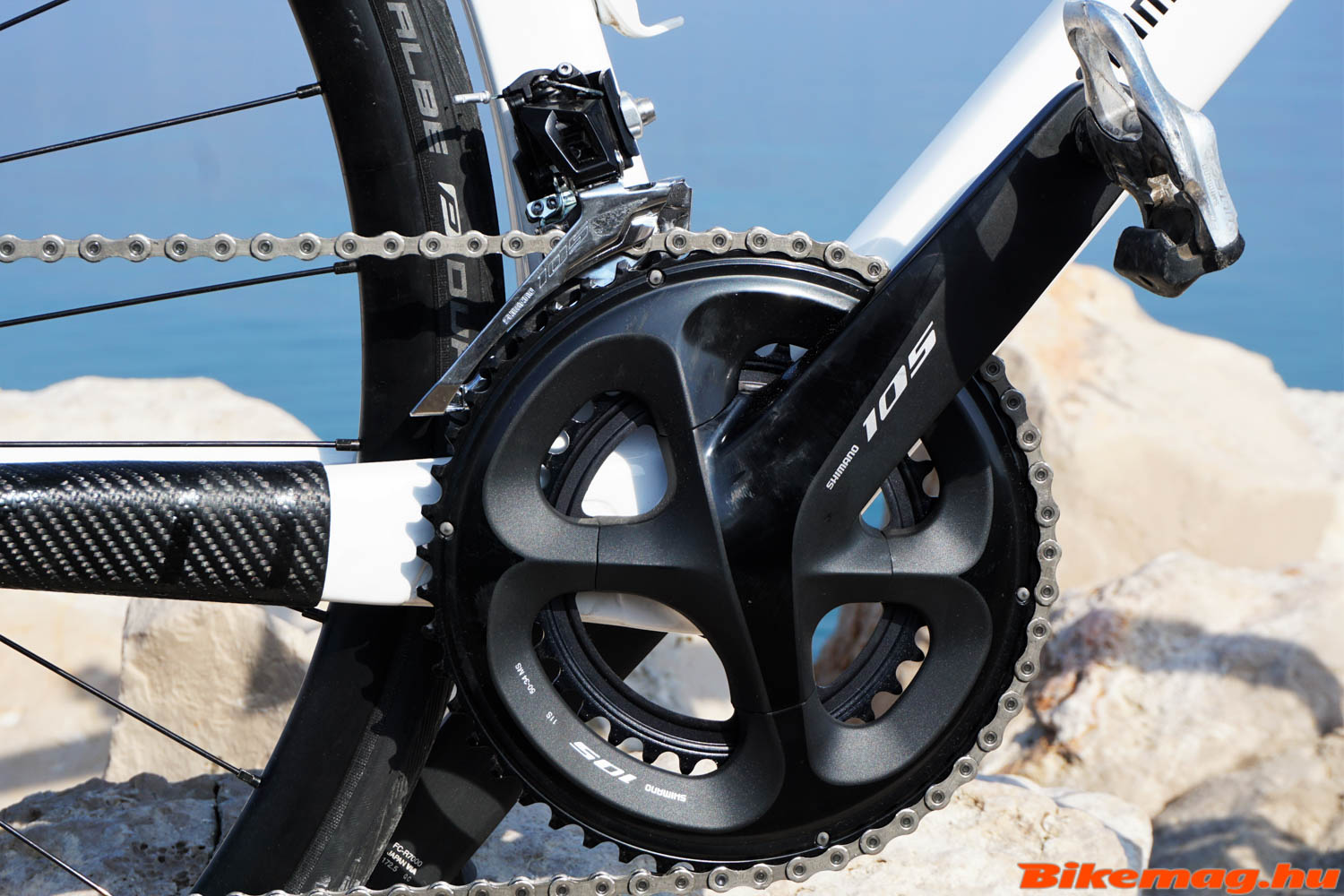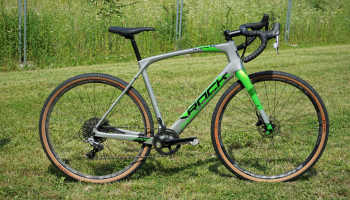Shimano’s 105 group set has seen complete revamp for 2019. The new R7000 receives an innovative front and rear derailleur as well as a new shift/brake levers based on the top-of-the line offerings. Both the efficacy and the appearance of the components bear close resemblance to the premium models. The R7000 is undoubtedly the best Shimano 105 “gruppo” ever!
Exactly one year ago came the news that the 105 will soon see a complete transformation. This had been expected, as the complete revamp of the flagship Dura Ace group set was followed by the second-tier Ultegra in 2018, and the Japanese component maker predictably tickles down its most recent technologies to the lower price level. This new 105 is a completely new generation, not a merely a facelift with some lesser design changes. Now this mid-price level component set now takes most of the technology and the design of the top two groups, offering exceptional level of performance and value. Last summer we were able to take a closer look at the new 105 parts, and we reported on what we experienced.
We have published no less than two articles about the new 105 R7000 describing its new technologies, this time the emphasis will be on how it actually performs in practice – so we did some riding on it! For those, who want a short summary of the changes from the previous 5800 generation, these are the main features:
- New Shadow RD rear derailleur uses Shimano’s low-profile Shadow parallelogram design. Shimano claims the design reduces crash vulnerability and improves shift performance.
- A front derailleur which benefits from the design of the latest Dura-Ace front derailleur, replaces the long actuation arm with a more compact design which incorporates tension adjustment into the derailleur itself. This new design requires less effort to initiate upshifts and improved cable routing options.
- Three different dual-control levers available, all sharing the design of the higher-end Ultegra R8000 levers with slimmed down hydraulic internals, improved ergonomics and 15mm reach adjustment.
- Rim brake with improved tire clearance to fit 28mm tires, in all possible mounting configuration, e.g. direct mount, conventional single-bolt as well as chain stay attachment.
- A crankset with same half matte, half gloss look as Dura-Ace and Ultegra in wide selection of lengths (160, 165, 170, 172.5 and 175mm) and chainring combinations (53/39t, 52/36t and 50/34t) using the 110mm asymmetric 4-bolt bolt pattern as the previous generation.
- A wide range of cassette options including 11-25, 11-28, 11-30, 11-32t as well as a wide-range CS-HG700 11-34t version, which fits on 10-speed freehub bodies with a spacer.
From the wide selection of component choices listed above, the bike we received for testing was the R7020 version, featuring hydraulic disc brakes. It a true novelty, also permitting direct comparison to the Ultegra hydraulic group set which we’d tested the year prior.
This new generation of 105 has nothing to be ashamed of – not even the hydraulic version. The new brake/shift lever also has a pleasing design, the bulky shape of the previous generation is fortunately a thing of the past. In fact, I wouldn’t be able to tell it’s hydraulic if wasn’t riding the mechanical model variant on a daily basis for some time. Shimano has certainly done a great job concealing the oil reservoir. The feel and handling of the hoods are also quite similar to the mechanical version, the R7020 is very comfortable and provides a stable platform for the hand to rest on. There are several hand positions, which can be a great advantage on the longer rides. I’ve really taken to these hydraulic levers, although I generally prefer the feel of the mechanical units. Ergonomics is spot on, as they are perfect match for my hands when pedaling in the standing position. The same is true when I tuck low with my arms extended, the hood tops provide a good grip to hold on to. On other designs this aerodynamic “elbow-down” position can be somewhat shaky, unsafe for riding on less than perfect road surfaces.
Last year, while testing of the revamped Ultegra group set, I was astonished to experience how short the shift lever movement is with this new shifter design. Fortunately this feature was brought over to the 105 “brifter”: so just a touch of the lever and the gear change is complete! The action lightning fast, just like the top-tier versions! Frankly, I believe the shifting is actually quicker on these mechanical systems, than with the Di2 electronic! This is certainly the case at the back, the front shifting is debatable. Moreover, the lever movement doesn’t need great force either, so the actuation is both light and quick – provided that the cabling on the bike is done correctly as we’ll later see…
The disc brake offers ample of force, that’s for sure. Due to the unusual long spring drought, I didn’t have a chance to ride them in the rain. So the real trial has yet to come, but since the R7000 hydraulic brake design is very close to the Ultegra, I’d be surprised to see any flaws. On the other hand, I experienced slight noise after prolonged braking. The clatter persisted until the discs and the pistons had a chance to cool down. After the next descent the noise returns and this accompanies the whole ride. Mind you, my rides have a lot of climbing and descending, so those riding on flatter terrain may not even notice this. I also have a tendency of being distracted by noise, and this is partly why I still prefer to ride rim brakes on my own bike. All in all, a modern hydraulic disc brake offers a lot of advantages, a much better all-around performance, especially when riding in wet conditions.
The front derailleur also bears a close resemblance to the Ultegra model. The design and technical aspects are virtually the same, the finish is the only thing that sets them apart. Setting up and adjusting of these units are far easier compared to the older generation front derailleurs: the cable tensioning mechanism is a blessing from heaven for the bike owner. In terms of performance I felt no different between the Ultegra front shifting compared to the 105. Both are as good as it gets, provided the unit and the cabling is set up correctly.
The Shadow RD rear derailleur is an interesting design in all three top Shimano group sets. It came from mountain biking with the aim to reduce the chance of damage to the unit if the bike happens to fall on its side. Novice riders often suffer minor accidents where the RD unit saw cosmetic or even structural damage. As the derailleur is moved inboard toward the centerline of the bicycle, such fall would cause lesser damage. Since the performance didn’t suffer a bit due to the change in design, I applaud this endeavor.
There is one more to add concerning the shifting performance of the R7000. Since its introduction, I have ridden four different bikes equipped with the new Shimano 105 “gruppo”, and they all exhibited some difference in shifting. Presumably this variance is not a result of lack in quality control at the Japanese component maker: the fault is more likely to be in the setup of the bikes, especially the cable routing. When the cables are moved through the bike frame in crooked lines, the rider cannot expect top-notch shifting. On the other hand, a well-designed internal routings is expected to call forth splendid performance. (The bike I received for testing the R7000 had decent – but far from the best – shifting, some manufacturers do a much better job!)
Let’s continue with the drive train! The crank set design didn’t seem to have changed much from the previous generation. Some chain line modifications were made to the new Shimano 105 to solve compatibility issues when paired with a disc brake system, but that’s about it. I received the 50/34T chainring version which is fine for most users, but other setups are also available if needs differ.
The other part of the drive train is the cog set, where Shimano went for a truly with gear range. The new derailleur design allows for up to 34T cog. The test bike came with an 11-30T sprocket range, which is still plenty large for even the steepest hills. I believe this change makes the new 105 even more appealing for amateur road cyclist, no one can make any complaints when it comes to gear range.
All in all, the R7000 brings about a lot of new technology, adopted especially for the typical amateur road rider or racer. Yes, I truly believe that this mid-level group set is suitable for competitive riding. I never thought there would be a mid-price road group set which delivers such impeccable performance!
More information the manufacturer’s website.
R7000 component weight (compared to Ultegra R8000):
Chain set 713.4 g (50-34T) – Ultegra 674g
Front derailleur 95 g – Ultegra 92g
Brake/shift levers 500g – Ultegra 440g
Rear derailleur SS 225g – Ultegra 200g
Cog set 320g 11×32 – Ultegra 292g
Chain 257g – Ultegra 257g
Brakes pair 379g – Ultegra 360g
System weight 105 2,489g – Ultegra 2,315g
All together a mere 174g of difference!

